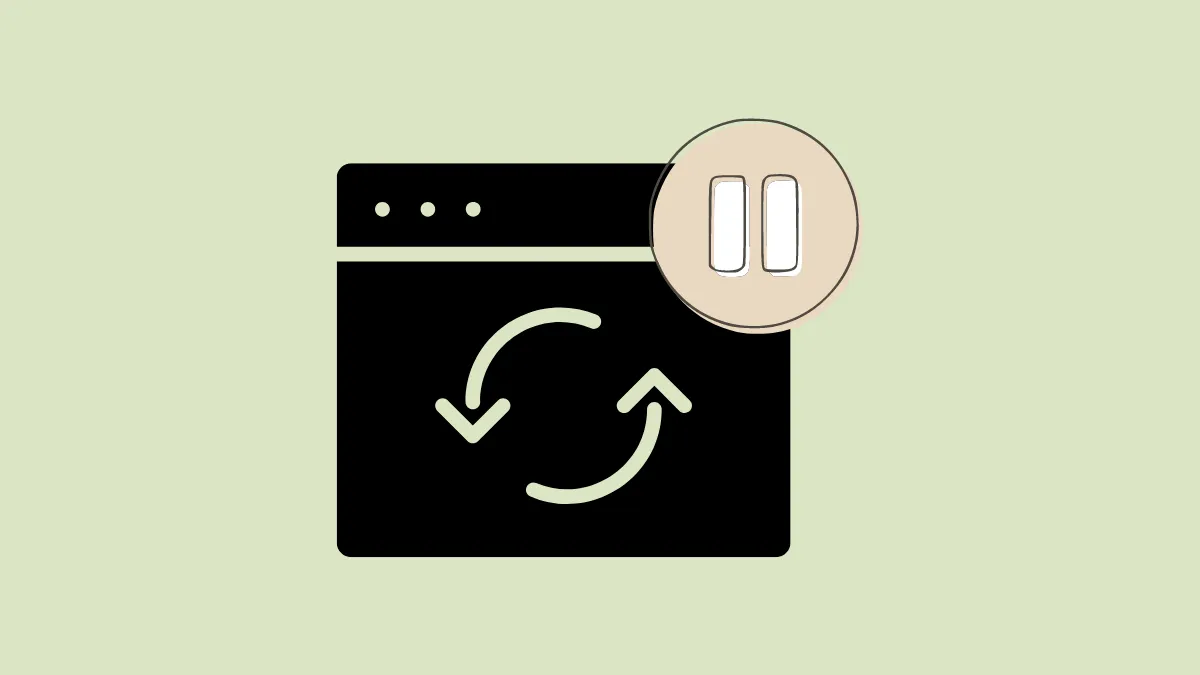Quick Info
- If you're looking for a temporary solution, pausing Windows Updates from the Settings app is the best option.
- To disable updates permanently, you will need to make changes to the Windows registry, use the Group Policy Editor, or rely on the Services utility.
- Any changes you make can be reverted later on at any time you want Windows to start getting updates again.
- Not all solutions are available for all Windows 11 editions, so check which one you have before trying them out.
Method 1: Pause Windows Updates from the Settings app
- Open the Settings app and click on 'Windows Update' on the bottom left.

- On the Windows Update page, you will find a 'Pause Updates' option. Click on the dropdown menu to its right and click on the number of weeks for which you want to pause the updates.
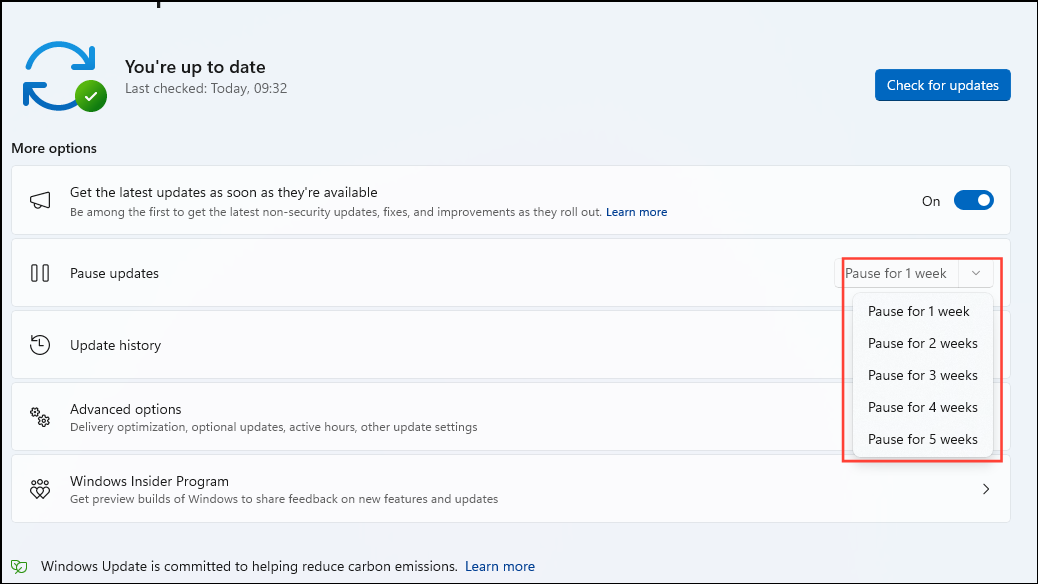
- You can pause the updates for up to five weeks at a time at most.
Note: Once you reach the end of the period for which updates were paused, they will resume automatically. At that time, you will not be able to pause them again until all the updates up to that point are installed.
If you want to permanently stop your PC from installing updates, you will need to disable them.
Method 2: Disable updates using the Registry Editor
- Open the Start menu and type 'Regedit' before clicking on the 'Run as administrator' option.

- When the Registry Editor opens, paste the following address in the address bar at the top and press Enter to navigate to it:
HKEY_LOCAL_MACHINE\SOFTWARE\Policies\Microsoft\Windows

- Check whether a 'WindowsUpdate' key is present. If it isn't, right-click on the 'Windows' folder, then click on 'New' and then 'Key'. Name the new key 'WindowsUpdate'.

- Then right-click on the newly created WindowsUpdate key and again go to 'New' and then 'Key'. Name this key AU.
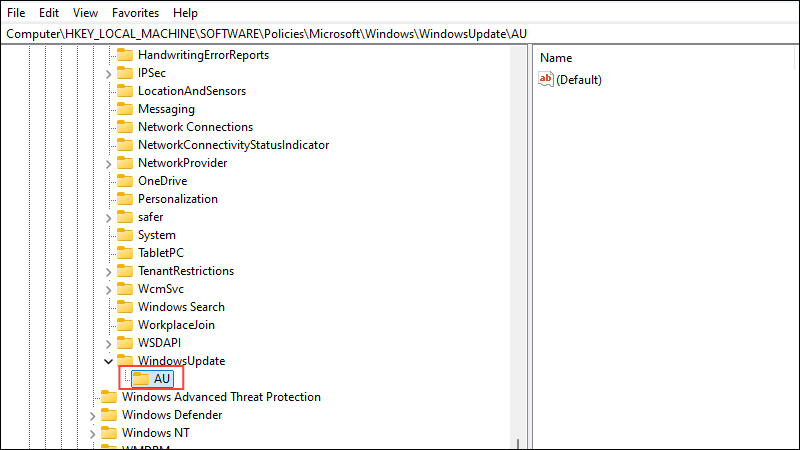
- Now right-click on the 'AU' key, click on 'New' and then click on 'D-WORD (32-bit) value'. Name the D-word value 'NoAutoUpdate'.
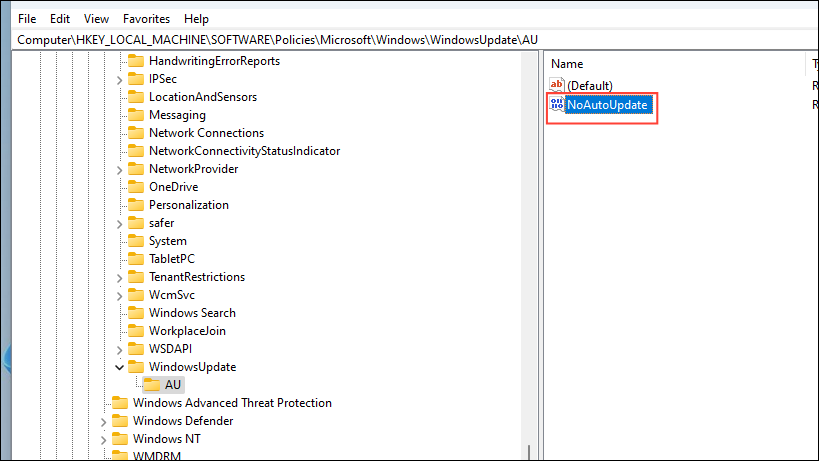
- Double-click on the 'NoAutoUpdate' value on the right and change its value to
1. Then click on OK and restart your computer to apply the changes.
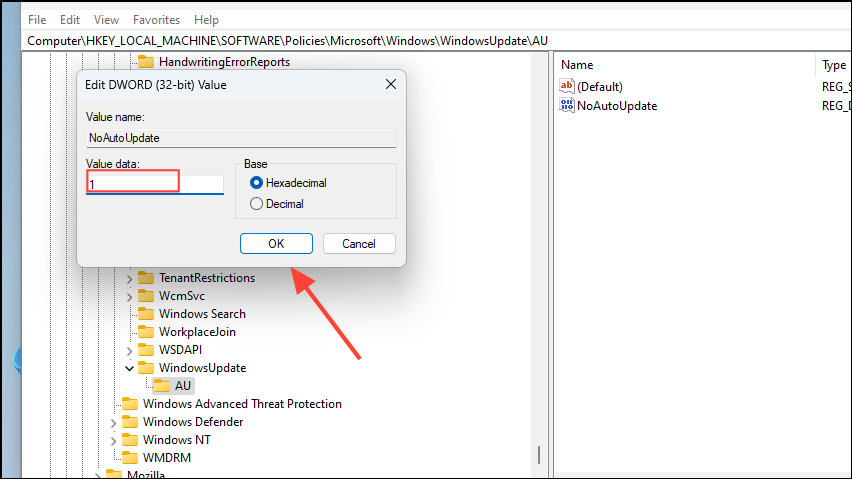
Method 3: Disable updates with the Group Policy Editor
- Open the Start menu, type
Group Policy, and click on 'Edit Group Policy'.
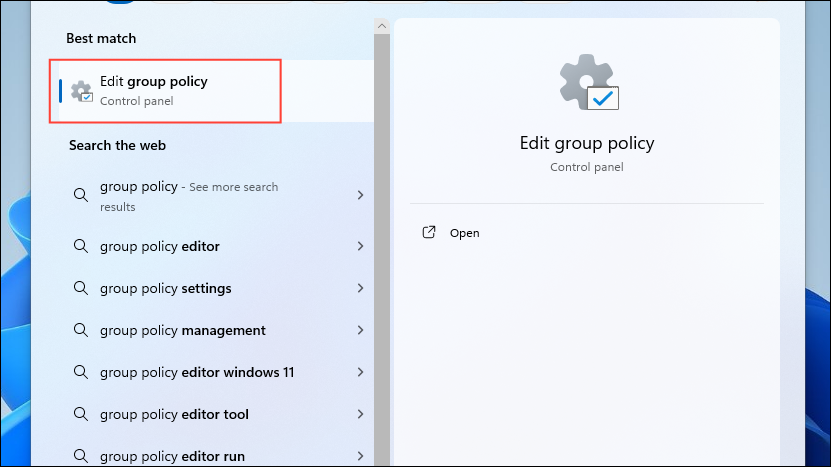
- In the Group Policy Editor, click on 'Computer Configuration' on the left and go to 'Administrative Templates'. Then double-click on 'Windows Components'.

- In the Windows Components directory, scroll down and click on 'Windows Update' and then on 'Manage End User Experience'.
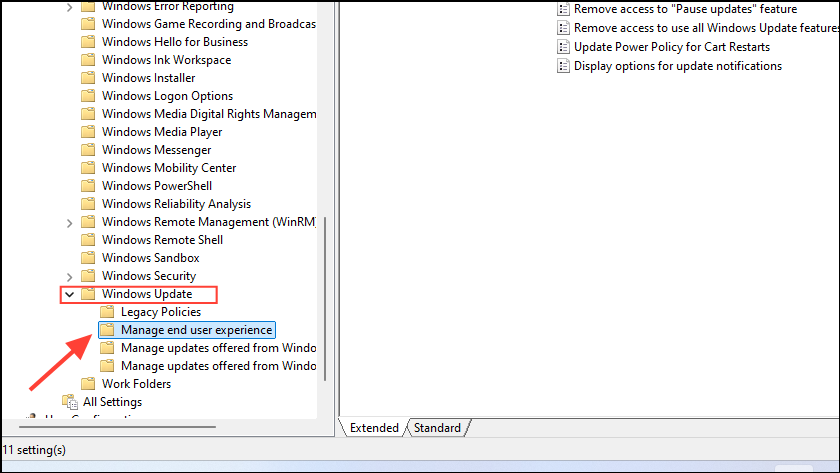
- Double-click on 'Configure Automatic Updates' on the right.
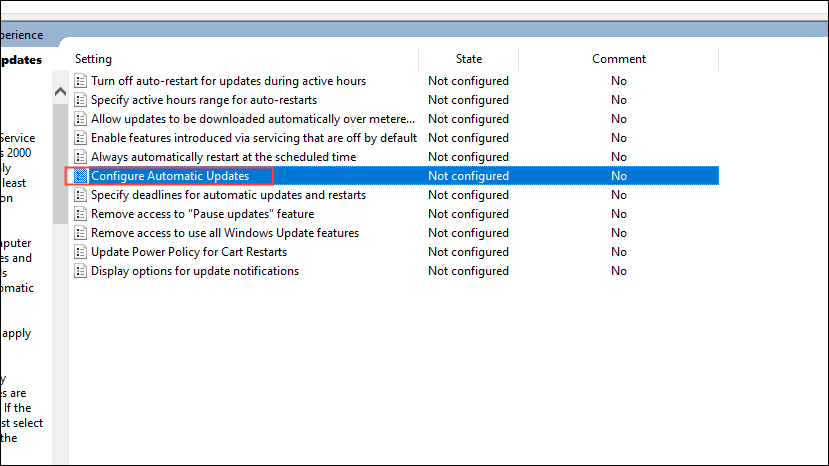
- In the pop-up that appears, click on the 'Enabled' option on the left and then click on the dropdown menu and select '2 - Notify for download and auto-install'.
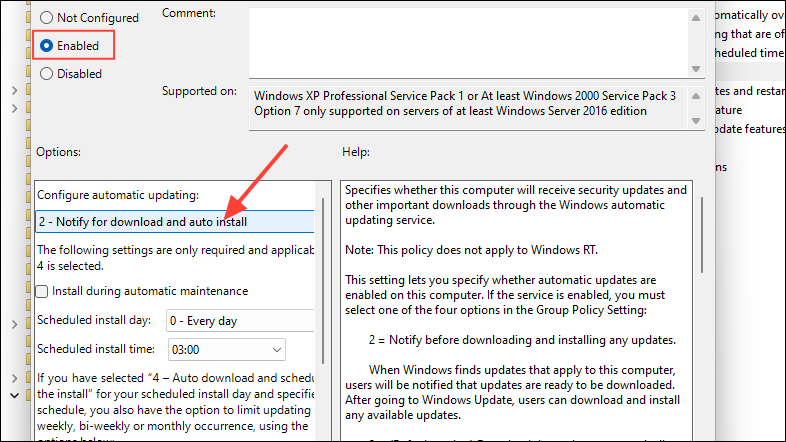
- Finally, click on the 'Apply' button and then click on 'OK'.

Note: You can only edit Windows Update policies in the Group Policy Editor if you have the Pro or Enterprise version of Windows. The editor is not present in the Home edition of the OS.
Method 4: Disable Windows Update Service
- Open the Start menu, type
services.msc, and click on 'Run as administrator'.
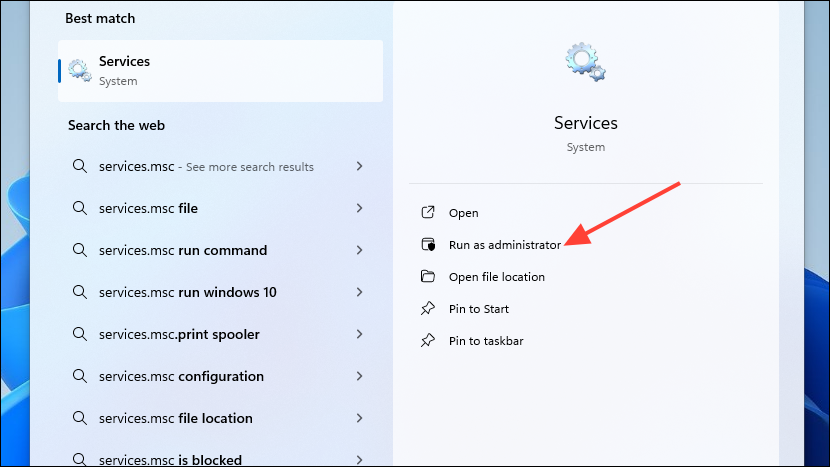
- When the utility opens, scroll down to the Windows Update service, right-click on it, and click on 'Properties'.
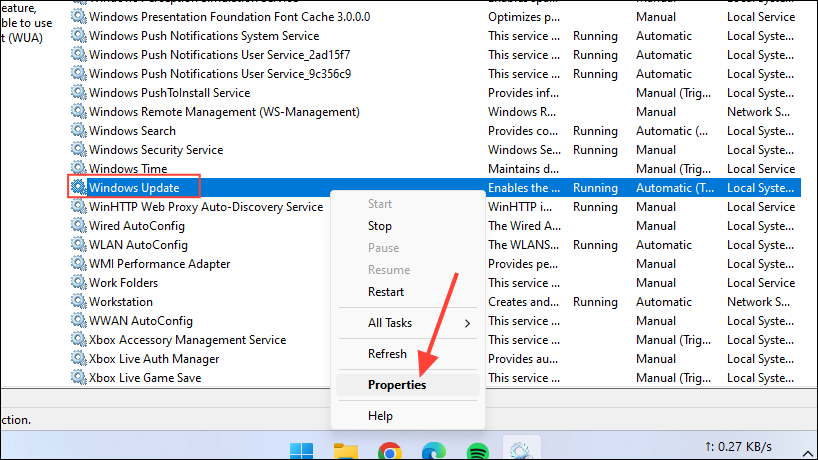
- In the Properties window, click on the dropdown menu on the right of the 'Startup Type' option and click on 'Disabled'.

- Click on the 'Apply' button and then on the 'OK' button before rebooting your PC.

Things to know
- While there are situations where you may not want Windows to download and install updates on its own, updates often contain security patches and bug fixes and permanently disabling them is not recommended.
- Pausing updates is the easiest and safest option if you do not want to install them right away and it can be done on all Windows editions.
- Once you disable Windows Updates, you can re-enable them using the Group Policy Editor or the Services utility.
- Making registry changes can put your computer at risk and also affect its working, so create a backup or a system restore point before doing so.
- If you want to turn off Windows Updates because they can randomly restart your PC, you can always set it to notify you before restarting and even postpone and schedule the restart.
- There are third-party programs that may help you disable Windows Updates permanently, but it is best to stay clear of them and use the options built into the OS.

